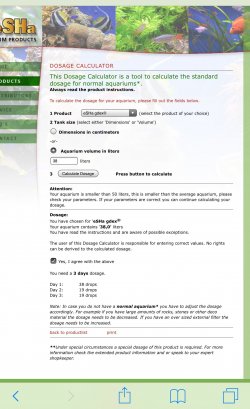I’m wondering if any members have had any luck using this product?
I think I’ll need to treat my fish with this at some point in case of worms of gill flukes that may be present. I don’t quarantine any of my fish and I’ve noticed flashing again. I added another fish around 3/4 weeks ago.
I’m aware minor infestations don’t always show either.
I was going to add salt as I didn’t leave it in the full 14 days the last time I added it in. It was left in for 12 days. But now I’m thinking it could be something more serious hence me seeking feedback on this product.
I would like to know if any members have had any luck with this treatment and if it’s harmful to plants. How long does it need to be kept in the water?
I’m quite worried about dosages too as 20mls can treat up to 300 litres and I only have a 38 litre tank.
I’ve heard praziquantel is the best for treating flukes and worms which is what has attracted me to this product.
Any advice at all would be appreciated, thank you!
I think I’ll need to treat my fish with this at some point in case of worms of gill flukes that may be present. I don’t quarantine any of my fish and I’ve noticed flashing again. I added another fish around 3/4 weeks ago.
I’m aware minor infestations don’t always show either.
I was going to add salt as I didn’t leave it in the full 14 days the last time I added it in. It was left in for 12 days. But now I’m thinking it could be something more serious hence me seeking feedback on this product.
I would like to know if any members have had any luck with this treatment and if it’s harmful to plants. How long does it need to be kept in the water?
I’m quite worried about dosages too as 20mls can treat up to 300 litres and I only have a 38 litre tank.
I’ve heard praziquantel is the best for treating flukes and worms which is what has attracted me to this product.
Any advice at all would be appreciated, thank you!




